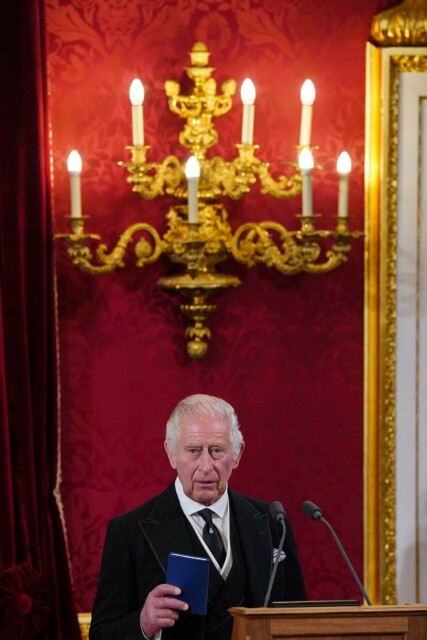THERE are many British Parliamentary procedures, and one of them is the humble address.
This is what you need to know about the ancient and rarely used procedure.
What is a humble address?
A humble address is a direct call from the House of Commons to the Sovereign, in this case the reigning monarch, to ask the government to produce documents.
The Opposition sometimes tables a motion in the form of a humble address on Opposition days.
A humble address is a message to the King.
It’s used, among other things, to call for papers from departments headed by a Secretary of State.
This address can be debated, amended and voted on like any other motion.
Humble addresses, if agreed, are understood to be binding on the House.
King Charles III was formally proclaimed as King on September 10, 2022
According to Parliamentary Practice – a rule book published in the 19th Century – the humble address is more binding than a simple opposition motion.
That is because it is an appeal to the head of state, rather than to the government who could otherwise choose to ignore it.
Former Speaker of the House John Bercow said such motions were “traditionally regarded as binding or effective”.
It has rarely been used in the past 200 years.
You’ll also hear the term “An Humble Address” after the King’s Speech.
After the state opening, the Government’s legislative programme – as outlined in the Kings’s Speech – is debated by both Houses.
The Debate on the Address is the first debate of the new parliamentary session and normally lasts for five to six days.
The motion is phrased as: “An Humble Address” to the head of state thanking him for his gracious speech.
The job of moving the motion is regarded as an honour and is given to two government backbenchers.
They are normally a contrasting pair with very different constituencies – one a relative newcomer and the other a long-serving member.
By convention, their speeches are not contentious and contain both humour and flattering references to their constituencies.
When was the humble address introduced?
The term “humble address” has been around for centuries, as pages from books printed in the 1600s show.
It was used repeatedly, for example, during the first parliament of George I, in March 1715.
Records show that “an humble Address be presented to his Majesty… for communicating to his Parliament, the advices he has received of an attempt preparing to be made upon the nation from abroad, abetted and encouraged by treasonable practices at home, in favour of a Popish Pretender”.
General Stanhope, Secretary of State, advised parliament that “an humble address be presented to his Majesty… for his gracious message this day, and for his tender regard to the privileges of this house”.
Robert Walpole spoke out “in case of an invasion”, more money was needed for the troops, so “an humble Address” was “presented to his Majesty to allow full pay to half-pay officers”.
Did you miss our previous article…
https://hellofaread.com/politics/what-is-the-privy-council-and-what-does-it-do/








